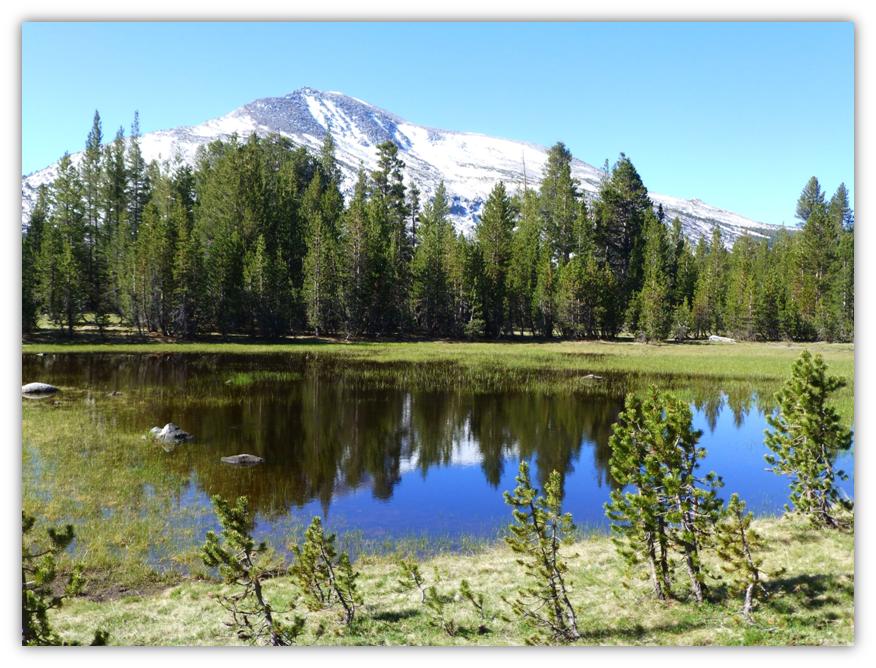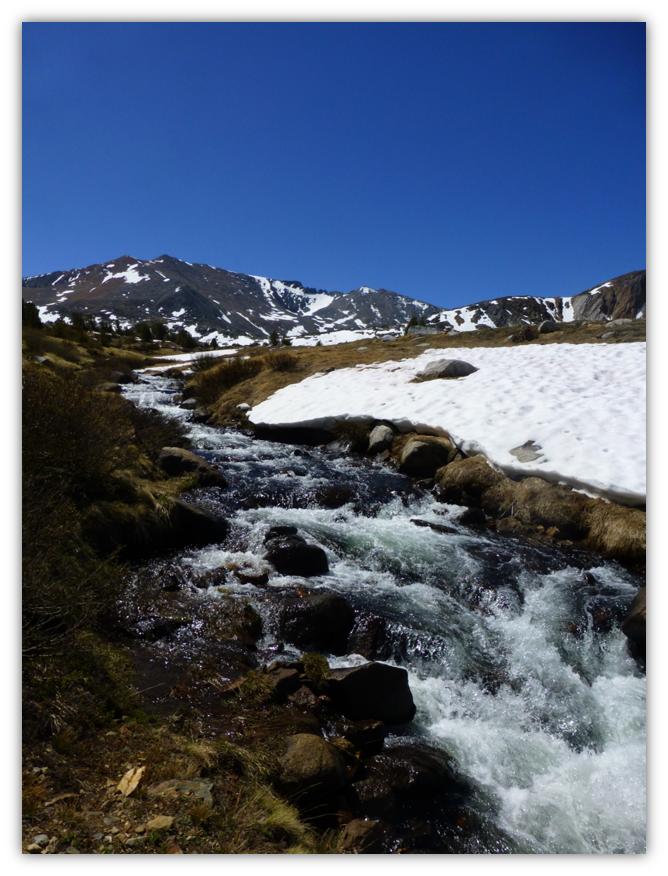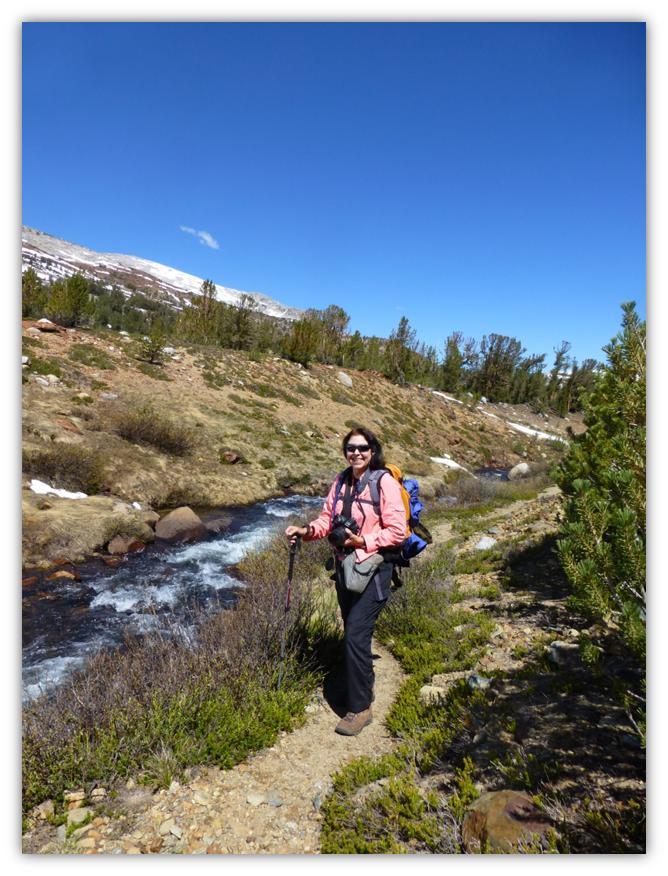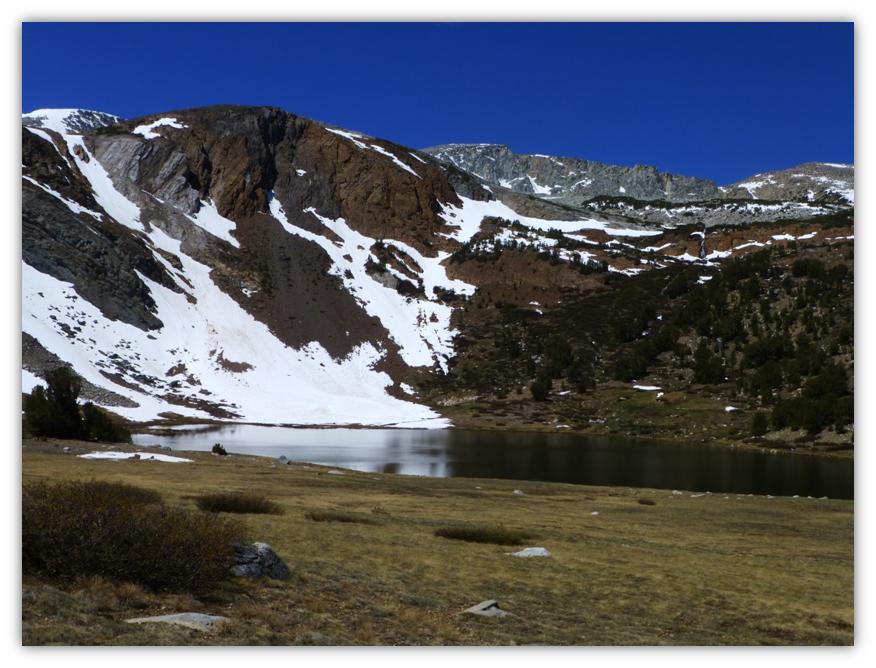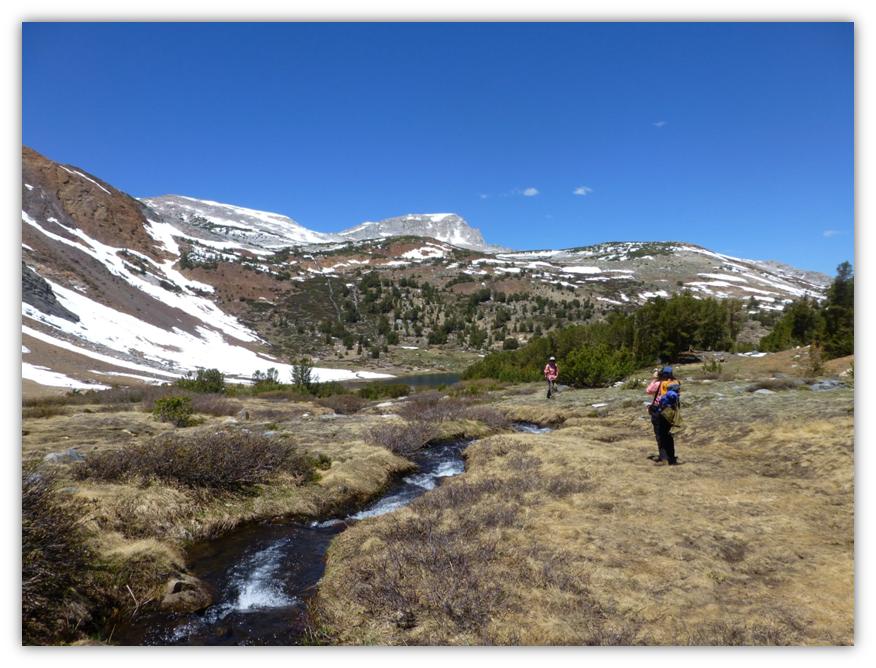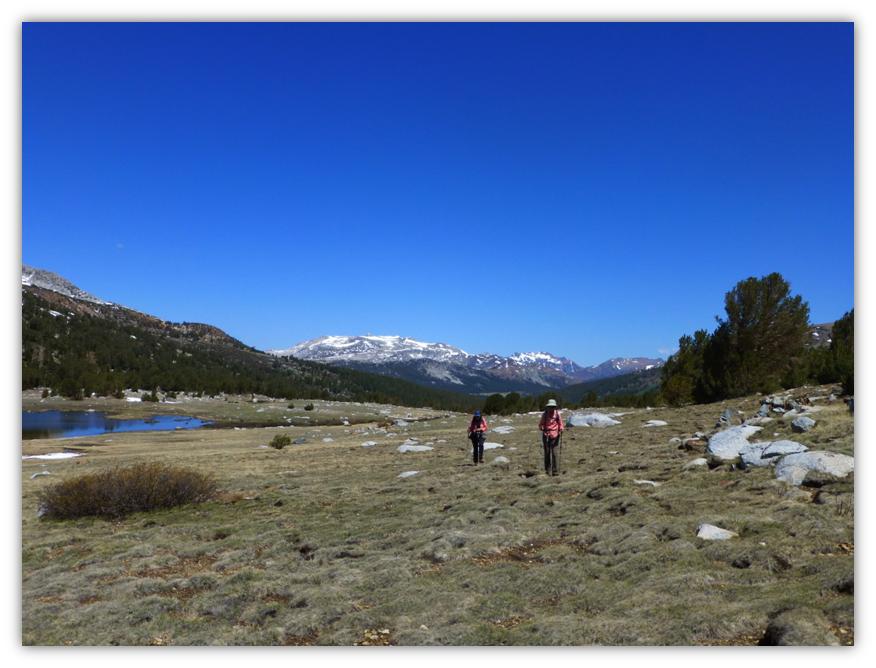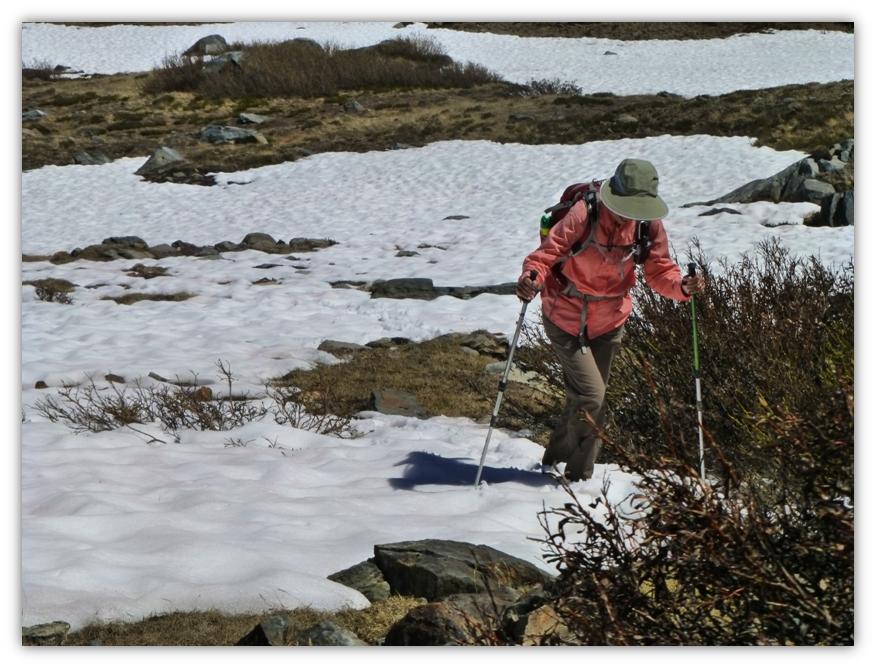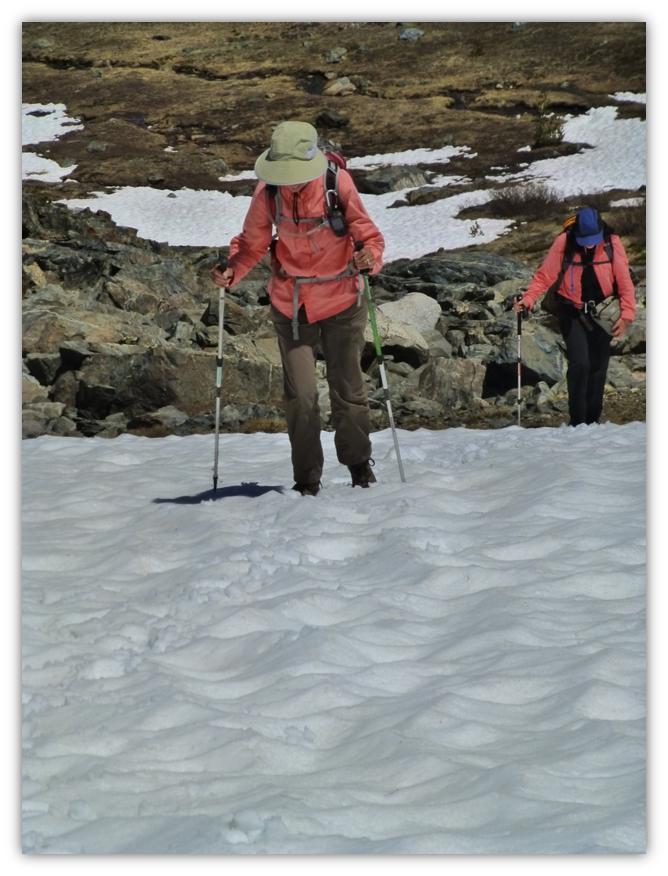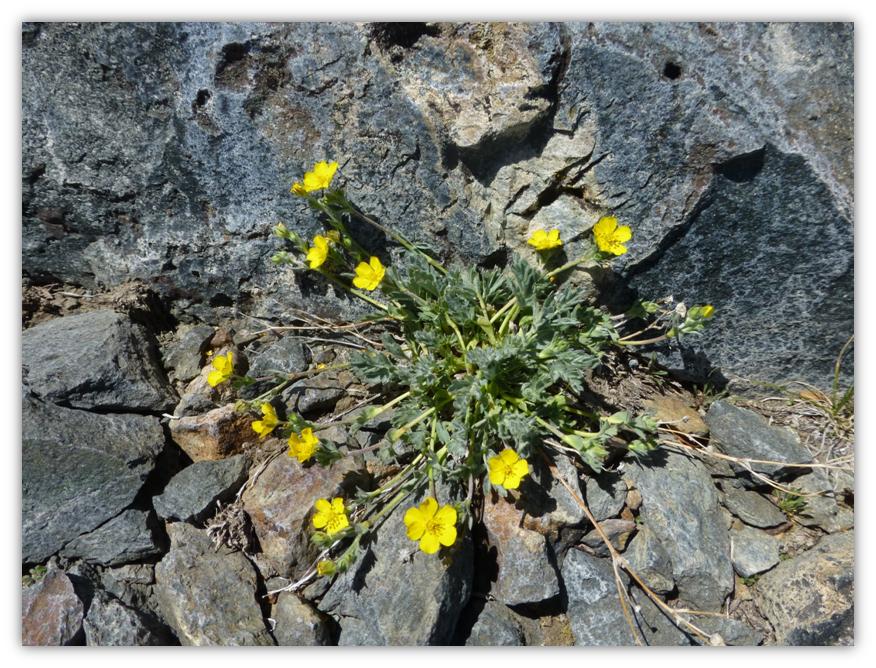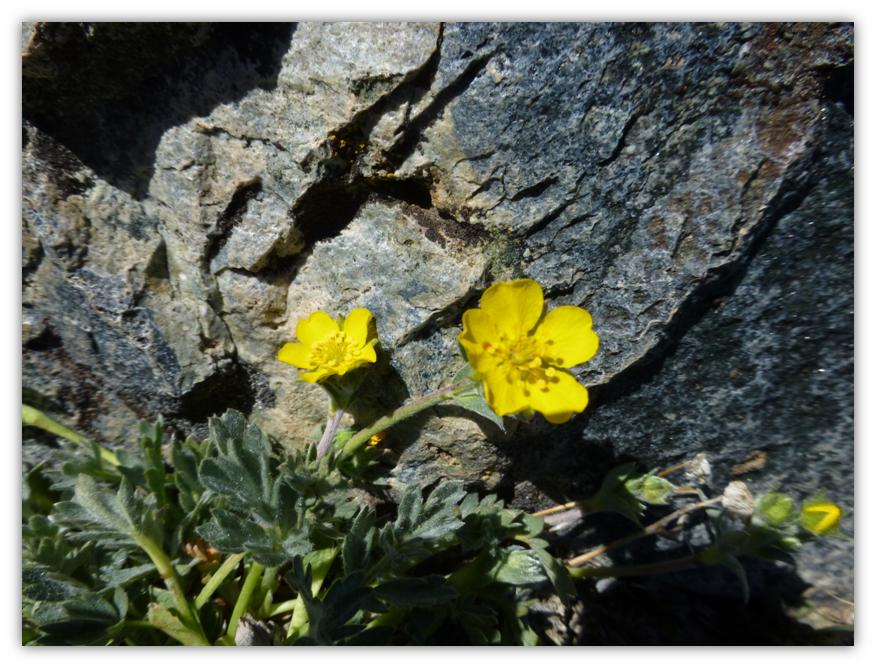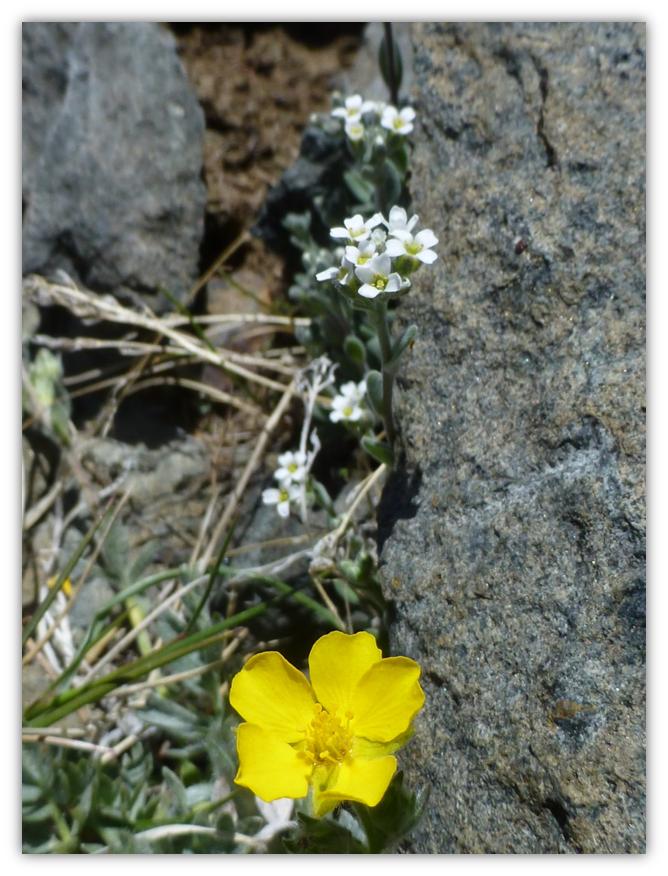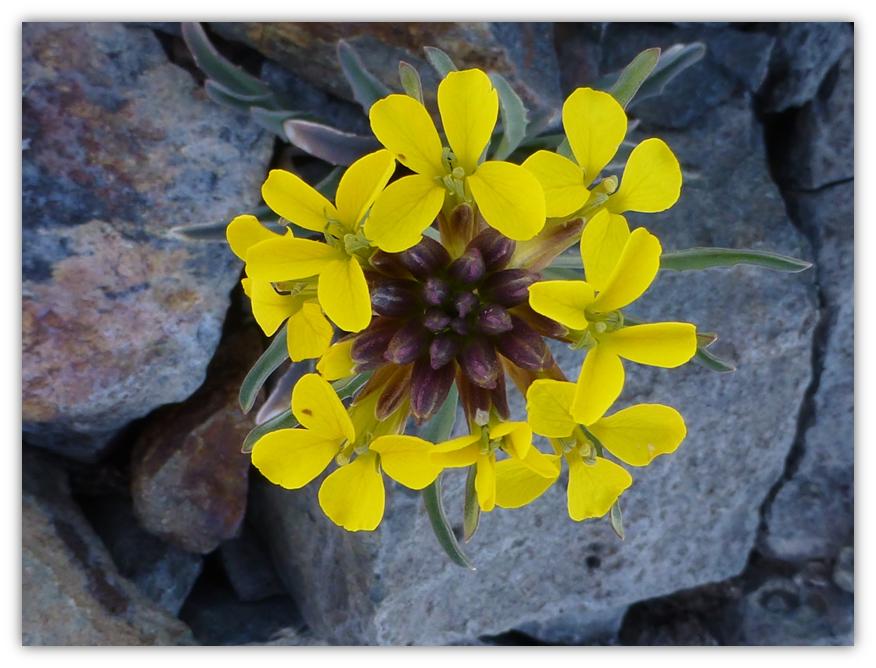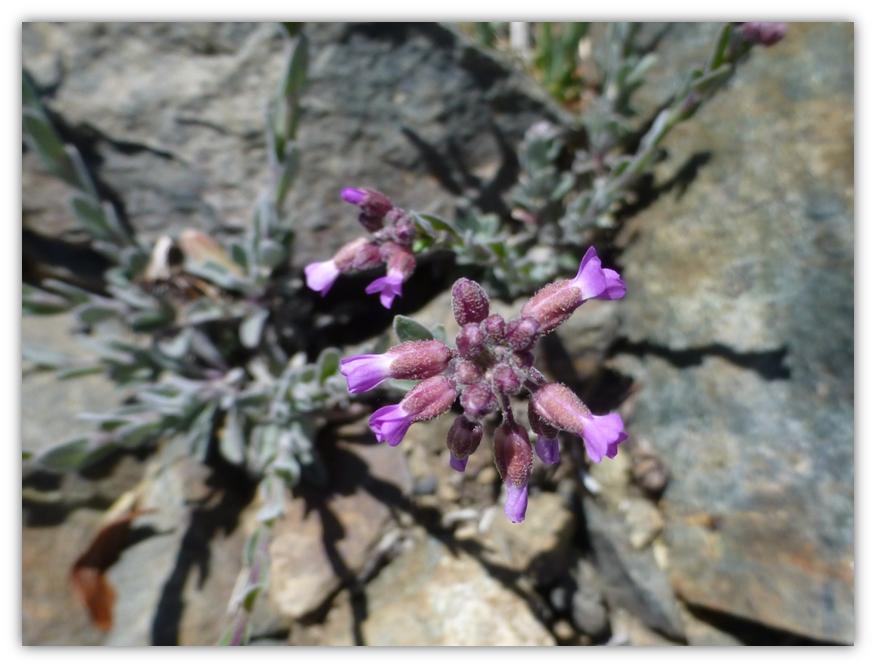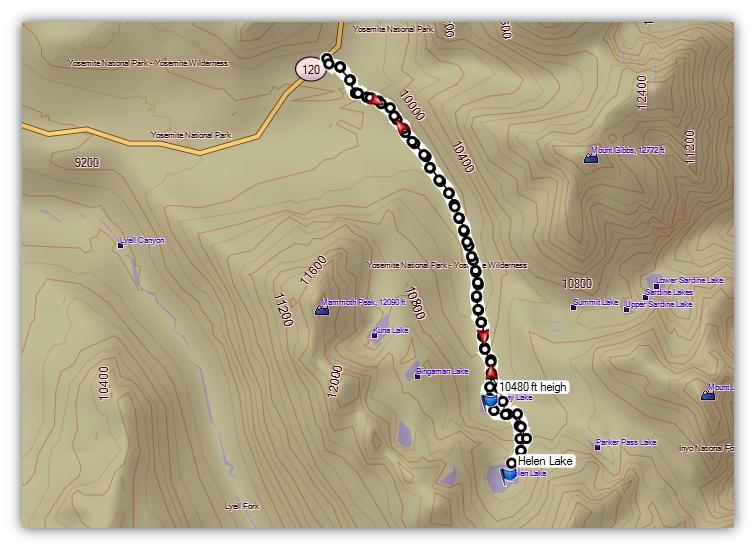On a day when it was over 100 degrees in the valley and foothills, what is a person to do? Go high! We went up to two beautiful high sierra lakes in Yosemite to experience snow, an iced over lake, friendly clouds, gorgeous reflections in the lakes and a rare opportunity to get up close with the elusive Yosemite Toad.
Where: Yosemite National Park Highlights: When it is hot as all get out, nothing beats the heat better than going to the high elevations of Yosemite National Park. We went up to about the 11,000′ elevation where Helen Lake was still about 90% iced over, and had a couple of feet of snow in the ground in places. Friendly white puffy clouds against the clear blue sky created amazing reflections for us wherever we went. Fishing was a success and we saw a rare creature on the hike. We had brought our water shoes with us, knowing that the spot where Dana Meadows Creek and Dana Fork come together might require some wading. And it did. There are several different techniques for keeping your socks and boots dry. Gail demonstrates the “Crocs” technique. Trekking poles helped us feel our way across the creek.
Looking up the trail to where we were heading.
Looking back down the trail where we came from, we could see the first teeny cloud of the day. The previous days had some good thunderstorms and rain but we picked this day because it looked like we might have a good weather window. But, you never really know. . .
Spillway Lake, which we skirted but would visit on our way down from Helen Lake.
The trail ends at Spillway Lake, so we skirted Spillway Lake, hugging the small hill on the east side, gaining elevation as we could, avoiding the trees, shrubs, small creek crossings and swampy areas the best we could. I like to get around the creek that comes out of Helen Lake and approach the lake on the south side of that creek. I think it is easier going. The tricky part is finding good spots to hop over the smaller creeks that snake around in that area, espcially this time of the year.
We started up the snowfield towards Helen Lake. As we gained elevation, we encountered a snow depth of 1 to 2 feet, melting fast though.
Many plants were just starting to pop out from their winter sleep. A few were beginning to flower but their flowers had me stumped so I contacted an expert. Joanna Clines, the Forest Botanist for the Sierra National Forest, identified most of these for me. I couldn’t have done it without her help.
Sierra wallflower, Erysimum perenne, Brassicaceae – Mustard Family:
Showy penstemon Penstemon speciosus:
I think this may be whoolly sunflower Eriophyllum lanatum:
I originally wasn’t going to include this picture because the picture was fuzzy but when I found out from Joanna that it was bog kalmia, Kalmia polifolia, in the Ericaceae or Heather Family, and that it is very poisonous, I felt that I should share it.
Distance: 10.8 Miles
Difficulty: Moderate to Strenuous
Elevation Range: 9,626′ – 10,953′
Date: June 7, 2013
We parked our car at the Mono Pass Trailhead, about 5.6 miles east of the Tuolumne Meadows Campground and 1.4 miles south of Tioga Pass. After using the restrooms there and stowing our stuff in the bear box, we headed up the trail. We hadn’t gone down the trail too far before a small tarn provided beautiful reflections of Mammoth Peak.
